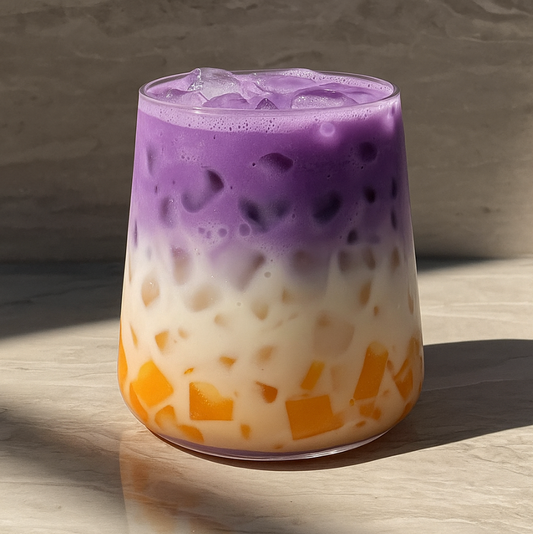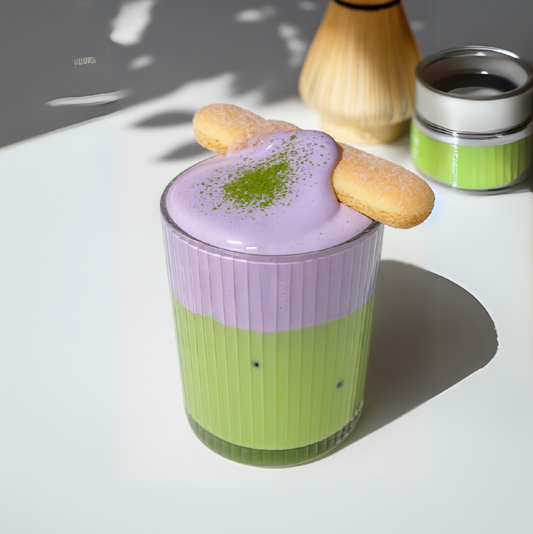Ube vs Taro: What’s the Difference Between These Two Asian Tubers?
Ube and taro are two tropical roots widely used across Asian cuisines. They belong to the big family of edible root vegetables—alongside sweet potato, cassava, Jerusalem artichoke and pumpkin. These exotic ingredients have become popular in vegan, vegetarian, gluten-free and additive-free recipes.
Beware of confusion: although they’re sometimes mixed up, their taste, texture and culinary uses differ. Ube shines with a naturally sweet, creamy profile of vanilla and hazelnut; taro is more neutral and earthy. Below we unpack the real differences, nutrition, kitchen uses and buying tips—e.g., at ube-nolia.com.

Ube & taro: origin, looks and flavor
Ube (purple yam) originates from the Philippines. The vivid purple flesh is dense and smooth. When cooked, ube develops a sweet, creamy taste with notes of vanilla and roasted hazelnut—hence its popularity in Asian desserts such as ube halaya or ice cream.
Taro grows in humid areas of Southeast Asia. With a rough skin and white flesh streaked with purple, its flavor is much milder. Gently cooked—on the stovetop or steamed—it becomes mealy and slightly pasty, perfect for savory dishes and velvety soups.
Color & texture after cooking
Cooked ube turns very creamy, almost mousse-like—great for dessert cubes, purple mash or creative gratins. Taro remains denser, closer to potato; mash or blend it to create a thick base for stews.
Nutrition: ube vs taro
Both are rich in fiber and starch. Ube provides vitamin C, potassium and anthocyanins (powerful antioxidants), plus carotenoids. Taro is higher in fiber, supports digestion and is naturally gluten-free—an excellent alternative to standard starches.
How to cook ube and taro
Peel carefully, grate or dice, then cook in boiling water or coconut milk. Ube can also be turned into convenient ube powder. The version from ube-nolia.com is perfect for colorful, additive-free sweets.
Recipe ideas with ube
- Ube coconut & ginger soup
- Sweet donuts with ube purée and lime
- Homemade ube latte with silky foam
- Vegan pudding using ube powder, plant milk and almonds
Recipe ideas with taro
- Taro & sweet-potato gratin
- Tropical curry with taro, carrot, pumpkin, onion & coriander
- Creamy taro soup with garlic, stock and coconut milk
- Pan-fried taro fritters seasoned with cinnamon
Cultural meaning
Ube: a Filipino pride
“Ube halaya”—a slow-cooked sweet purée with condensed milk and butter—is served warm and topped with cinnamon or almonds: a nostalgic celebration dessert.
Taro in Asian traditions
Taro is rooted in Chinese, Japanese, Polynesian and African cuisines. For Lunar New Year it’s cooked in soups or stir-fries, and also appears in sweet-savory combos with coconut or squash.
FAQ: ube vs taro
Do ube and taro taste the same?
No. Ube is naturally sweet, round and vanilla-hazelnut-like; taro is milder and mealier—best for savory cooking.
Is ube easy to buy in France?
Yes—use quality ube powder from Ube Nolia. It’s additive-free and comes with recipes and storage tips.
Can I make a gratin with ube?
Absolutely—try a sweet flan-style gratin, or a side with coconut sauce, nutmeg and ginger. Thick ube mash with boiling coconut milk and a dusting of cinnamon is also great.
Which is “better”, ube or taro?
It depends: for desserts, colorful drinks, mousses, ice creams and lattes—choose ube. For stews, soups and savory sides—go for taro. They can also work together in fusion dishes.
Conclusion: ube or taro?
For soft sweetness and velvet texture, pick ube. With ube powder, it’s easy to add to daily cooking. Taro is the rustic, nutrient-dense starch for savory fare. Best of both worlds: combine them—marbled soup, two-tone mash or a ube–taro mousse.
Ube & taro — keywords
- Cooked ube, hazelnut taste, root-velouté, purple sweet-potato mash
- Tropical preparations, starch-rich roots
- Ginger, nutmeg, cinnamon, garlic, coriander, pepper, parsley
- Cook in saucepan, gentle heat, boiling water, coconut milk
- Creamy, fluffy, colorful flesh, cooked texture
- Sweet potato, yams, cassava, Jerusalem artichoke, beet, pumpkin
- Masher, cubes, grated, vegetarian fries
- High-fiber, gluten-free, vitamin-rich, beta-carotene, vitamin A
- Sweet & savory, gratinéed, blended, delicious
Get it now to make delicious recipes: lattes, cakes, bread…












